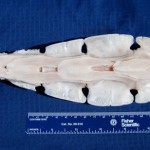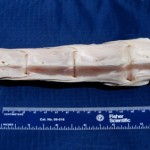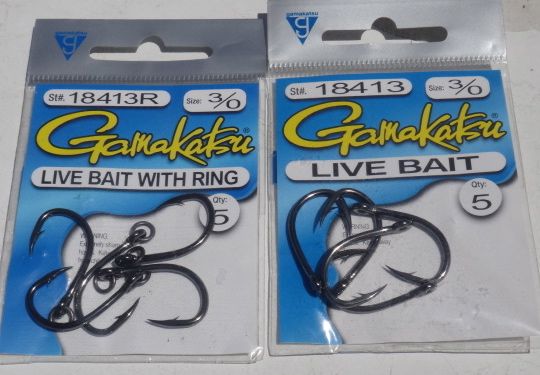June 10th update
Hello all,
We are winding down on our maintenance period–and the new refrigeration system is working great! The final adjustments were made yesterday and we are ready for some fish to go in the wells. We got our shipment of new gaff blanks, and we’ll will make some new gaffs next week.
On the fishing front, the weather has calmed down and we are waiting for an update from the boats that are on the grounds. We just received a report from the SAC spotter plane–they saw a school of 30-50# bluefin tuna at around 150 miles. Great news!
Sign up for a great deal–our 2.5 day trip through Fisherman’s Landing. See our schedule for the full line-up
Team Searcher
Tuna news
Hello anglers, We are happy to report that there has been several spots of fish seen by another Fishermans Landing boat! The Royal Polaris saw fish as close as 150 miles from home in calm weather yesterday. The fish that they saw up close were 20-40 pound bluefin tuna. Sounds exciting!
Team Searcher
New tackle tip video from Capt Art
Need advice about selecting the right hook for your set-up? Wondering what to bring aboard for your summer tuna trip? Check out this video: http://youtu.be/UcJJV3jdUz0
Other tackle tip videos can be found here: https://www.searchersportfishing.com/trips/tackle-suggestions/
Hooks are courtesy of our newest sponsor: www.Gamakatsu.com
Passports
If you are taking a 4-day trip or longer, don’t forget you’ll need a valid passport book or passport card. Apply now if you don’t have one, or if yours is expired!
Marine biologist shares an insider view on tuna
One of our Team Searcher naturalists, Rob Nawojchik, has long been fascinated by tuna. We asked him to share why:
“Tuna, as fishermen and ichthyologists know, are the high-performance sports cars of the fish world. They possess many anatomical and physiological adaptations that allow them to swim fast (45-60 MPH) for long periods of time. In fact, tuna are the fastest fish in the ocean. Some of their adaptations can be seen externally: fusiform body shape, smooth skin made up of tiny cycloid scales, caudal fin with a high aspect ratio (functionally similar to airplane wings), body depressions for tucking in their pectoral fins, finlets on the dorsal and ventral peduncle to help maintain laminar flow, and many others. Physiologically, they have a muscle layer of slow-twitch muscles for cruising, a large deep core of fast-twitch muscles for fast swimming (good for catching prey and avoiding predators), counter-current heat exchangers for maintaining a high body temperature, and many other adaptations. Behaviorally, they use thunniform locomotion (in which the body is held rigid and only the peduncle and tail move) and ram ventilation. Associated with their locomotion is an interesting adaptation of the caudal spine. At the base of the tail, the spine has lateral projections (the “lateral keel”) that extend to the sides. The keel is quite obvious externally, but even more amazing when seen without the soft tissues.

The keel has at least two functions: 1. like the finlets, it helps to maintain laminar flow in that region of the body; and 2. it provides a greater “angle of attack” for the ligaments that connect the huge muscle mass to the tail fin. This greater angle of attack facilitates the thunniform locomotion, the rapid tail beat, and the incredible speeds of tuna.
On my recent visit to San Diego, Sean Sebring at Fisherman’s Processing was very generous in giving me the tail section of a processed yellowfin tuna. I took the tail section with me on a 12-day Baja Whalewatching trip aboard Searcher recently and prepared the skeleton along the way. Thank you to Sean, Captain Art and the crew of Searcher for being patient with me. I think the final product was worth the effort! (See attached photos of his prepared skeleton.)”
Capt Art on Let’s Talk Hook up radio
Tune in this Sunday, April 27 from 7-9 am on AM 1090!!
Spotting fish south of Islas San Benito
On April 10 we were travelling south from Islas San Benito on a whalewatching trip and the crew and I spotted an area of birds diving. As we approached, we saw 20-30# bluefin tuna jumping! Upon further observation, we saw balls of yellowtail on the surface as well. This was in 65-degree, blue water about 280 miles south of San Diego. This got us pretty excited about the upcoming fishing season. Some of our colleagues agree that this could be a productive spring and we hope to have an early start this year.
Stay tuned to Capt Art’s blog!
Office update
Hello anglers and friends! I am away from the office until April 24. It’s best to send an email with anything you need or a booking. Or call the office at 619-226-2403 and leave a message. Calls will be returned daily. Emails will be answered as possible with internet access. Or give us a call upon return to the office on April 24! Thank you, celia



